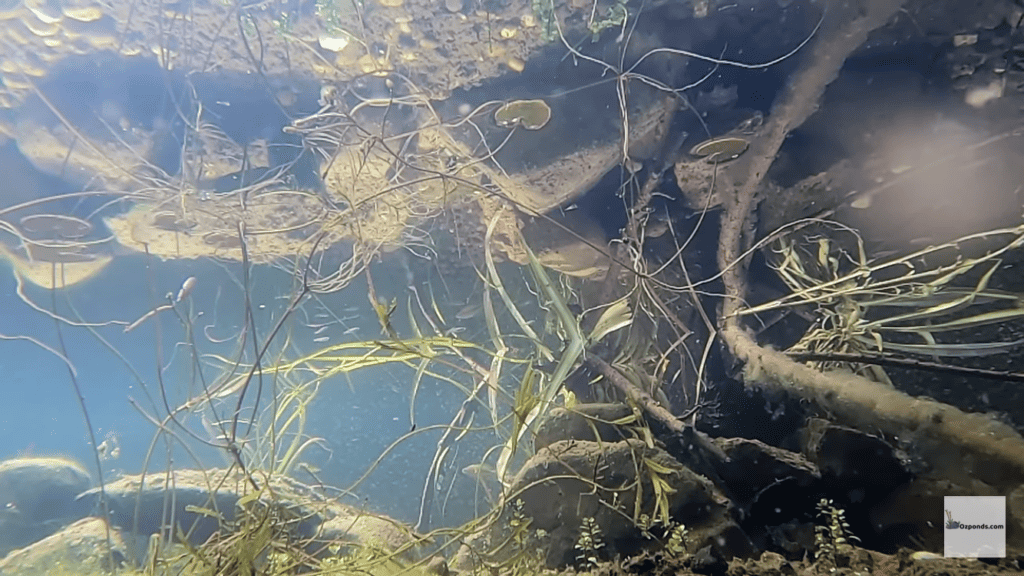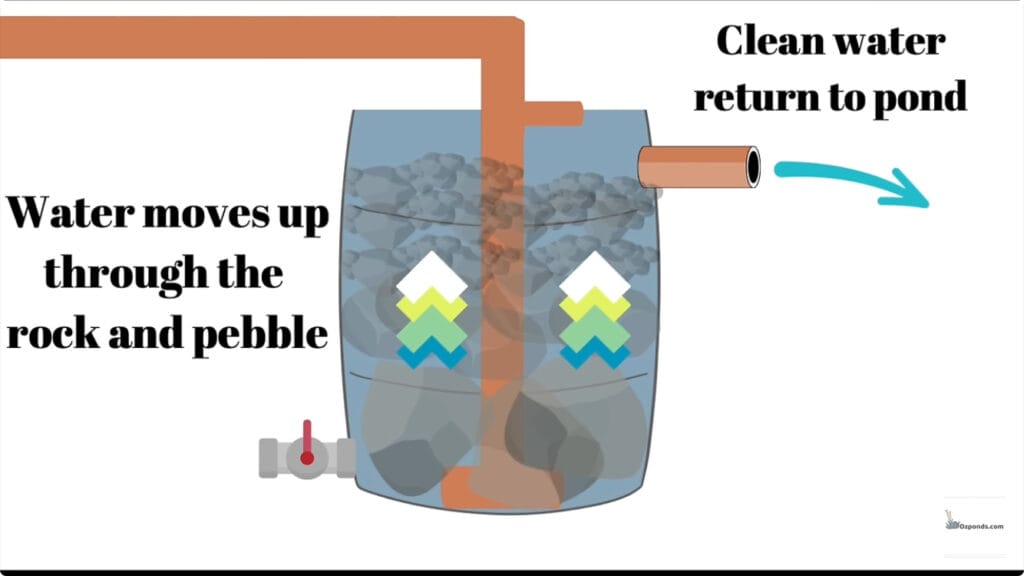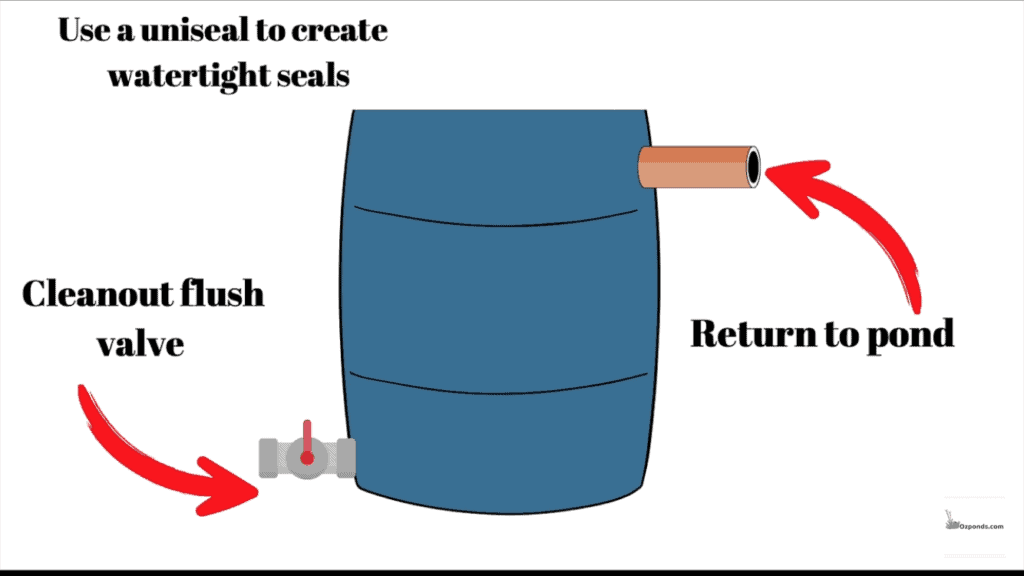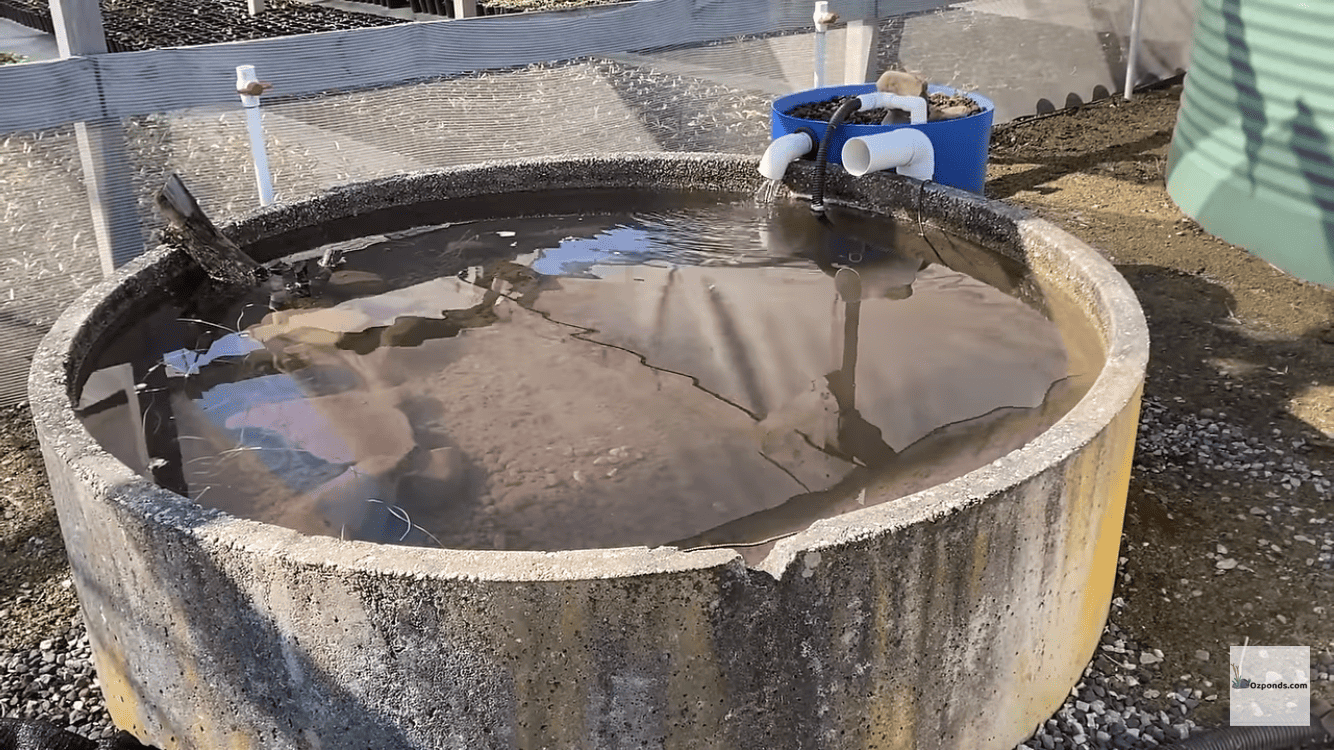Are you looking for an affordable and effective way to maintain clean and healthy water in your stock tank pond? Look no further than a bog filter!
In this guide, I’ll take you through the process of designing and building a simple bog filter for your pond, using readily available materials and straightforward techniques.
Designing and building a bog filter is easy and if you do it right you should achieve crystal clear water every time. Using my pdf formulas for bog filters can help you correctly size and build a bog filter, for pretty much any sized backyard pond.
Sizing
The first step in building a bog filter is determining the size. The size of the bog filter depends on the sort of animals or the stocking density inside the pond.
For a small fish, like goldfish or native fish like what I’m keeping in this pond, I size the bog filter at 10% of the ponds volume.
Larger fish like Koi the bog filter would be 20%. Turtles around 30%. Ducks 50%. The more waste the animal produces the larger the filter needs to be.
This stock tank holds around 1,500 litres (approx. 400 Gallons) of water. So I aimed for a bog filter that is approximately 10% of the pond’s volume.
In this case that’s 150 litres (approx. 40 Gallons). This ensures efficient filtration without overcomplicating the setup.

Flow Rate & Design
Calculating the flow rate helps the filter run at its best. I always take the empty volume of the filter and multiply it by 6 to give me the desired pump flow rate.
In this case the filter holds 150 litres (approx. 40 gallons), therefore the pump needs to move around 900 litres (approx. 240 gallons) per hour. On this pond I had an old 1000 litre (approx. 250 gallon) pump laying around so that’s what I used.
Constructing the bog filter involves creating layers of different-sized rocks and pebbles to facilitate filtration.

I repurposed an old blue barrel for the filter, drilling holes for inlet and outlet pipes, as well as a breather pipe to prevent siphoning in case the pump shuts off.
To create a watertight seal around the pipes that penetrate the barrel I used uniseals (Amazon affiliate link).
The outflow back into the pond needs to be larger than the inflow. That’s because the inflow is under pressure from the pump and the outflow is just gravity.

Cleaning
Regular maintenance is essential for keeping the bog filter functioning optimally. A cleanout valve at the base of the filter allows for easy removal of accumulated debris.
Periodic flushing with pond water helps prevent clogging and maintains water quality. Below is another video showing how I go about flushing a barrel bog filter.
Plumbing
Proper plumbing ensures efficient water flow between the pond and the filter. In my pond formula pdf I have a handy chart that shows the plumbing sizes that you’ll use from the pump to the filter. Usually I’ll simply use the largest fitting that goes onto the pump and select the corresponding hose/tube size.
Remember: The outflow from the filter needs to be larger than the inflow! On this filter I used a 25mm (1”) pipe from the pump to the filter. The outflow was 50mm (2”).
There’s lots of different ways that we can connect different types of plumbing like flexible to rigid. Below is a video where I talk about the different types of fittings that can help facilitate that.
Pump Placement
Positioning the pump slightly above the pond bottom prevents debris buildup and potential damage to the pump, this is useful in small ponds like this one.
I like to place the pump inside a plant pot (obviously bigger than the pump). I’ll then cover the holes and top with a coarse filter sponge (link will take you to pond products page, scroll down to find sponges).
This will prevent the pump from clogging and requiring regular maintenance, it will also stop baby fish and tadpoles from getting sucked into the pump.
In larger ponds a skimmer, intake bay or negative edge reservoir can further improve water circulation and filtration.
If you are unsure exactly what a skimmer, intake bay or negative edge is the video below can help clarify that.
Planting
Selecting appropriate aquatic plants helps enhance filtration and maintain water clarity. I have an article on best pond plants, which can give you some ideas.
I’m based in Australia but I tried to include plants from all over the world. Remember some plants will be loved in some counties and considered an invasive weed in others.
For a bog filter, especially a small one like this I like to choose plants with shallow root systems that are easy to maintain and thin out as needed.
Conclusion
Building a bog filter for your stock tank pond is a cost-effective and efficient way to maintain clean and healthy water.
By following these steps and guidelines, you can create a simple yet effective filtration system that will benefit both your pond ecosystem and your wallet.

